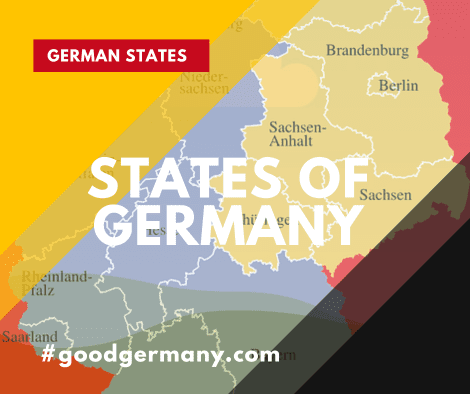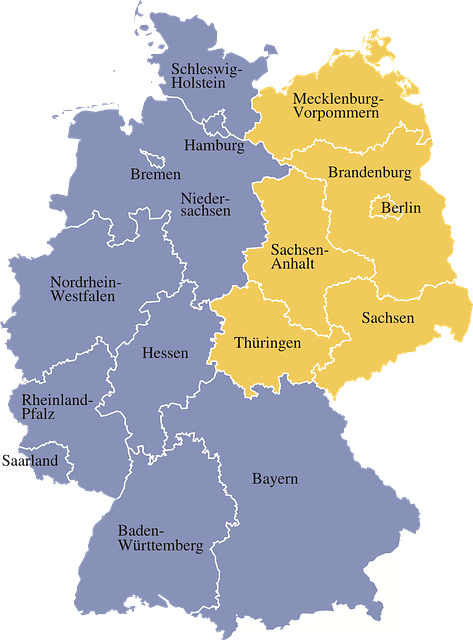The 16 States of Germany: Exploring the Diversity and Unity

Germany, renowned for its rich history, cultural heritage, and economic prowess, is a country that consists of 16 distinct states, each with its own unique character and charm. From the bustling metropolitan areas to the serene countryside landscapes, Germany showcases a harmonious blend of modernity and tradition. Let’s embark on a journey to discover the 16 states that contribute to the vibrant tapestry of this remarkable nation.
Table of Contents
- Introduction
- Schleswig-Holstein: Where Land Meets Sea
- Bavaria: A Tale of Traditions
- Berlin: The Heart of Modernity
- Baden-Württemberg: Innovation and Greenery
- Saxony: Where History and Culture Converge
- Hamburg: Gateway to the World
- North Rhine-Westphalia: Industrious and Dynamic
- Lower Saxony: Nature’s Abode
- Hesse: Where Urbanity Meets Heritage
- Rhineland-Palatinate: Vineyards and Beyond
- Brandenburg: Castles and Lakes
- Thuringia: Enchanting Landscapes
- Mecklenburg-Vorpommern: Coastal Beauty
- Saxony-Anhalt: Of Art and Architecture
- Saarland: Small yet Significant
- Bremen: A Tale of Two Cities
- Conclusion
- FAQs
- What is the significance of Germany’s division into states?
- Which state is known for its Oktoberfest celebrations?
- What makes Berlin a unique capital city?
- Which state is famous for its automotive industry?
- Are the states of Germany culturally diverse?
Introduction
Germany’s federal structure comprises 16 states, often referred to as Bundesländer. This decentralized system empowers each state to have its own constitution, government, and educational policies while collaborating on national matters.

Schleswig-Holstein: Where Land Meets Sea
Nestled between the North Sea and the Baltic Sea, Schleswig-Holstein is renowned for its stunning coastline, charming villages, and maritime heritage. Visitors are drawn to its pristine beaches, and the iconic port city of Kiel hosts the renowned Kiel Week sailing event.
Bavaria: A Tale of Traditions
Bavaria, famous worldwide for its traditional culture, picturesque landscapes, and iconic Oktoberfest, embraces both its history and innovation. The state boasts fairytale castles like Neuschwanstein and a thriving technology sector.
Berlin: The Heart of Modernity
The capital city, Berlin, stands as a symbol of unity and progress. Rich in history, it houses iconic landmarks like the Brandenburg Gate, while also being a haven for artists, entrepreneurs, and diverse cultures.
Baden-Württemberg: Innovation and Greenery
Known for its high standard of living, Baden-Württemberg combines technological innovation with natural beauty. It’s home to global automobile companies and the enchanting Black Forest region.
Saxony: Where History and Culture Converge
Saxony’s historic cities like Dresden and Leipzig are cultural treasures. With a legacy of classical music, ornate architecture, and cutting-edge research, Saxony is a dynamic hub of art and innovation.
Hamburg: Gateway to the World
Hamburg, a bustling port city, has a maritime legacy that extends to its modernity. Its famous harbor, impressive architecture, and vibrant nightlife make it a global hub of trade and culture.
North Rhine-Westphalia: Industrious and Dynamic
This economic powerhouse, known as NRW, encompasses major cities like Cologne and Düsseldorf. With a rich industrial history, it’s a melting pot of creativity, business, and diverse communities.
Lower Saxony: Nature’s Abode
Lower Saxony is blessed with natural beauty, boasting the Wadden Sea National Park and serene landscapes. Hannover, its capital, seamlessly blends urban amenities with a tranquil environment.
Hesse: Where Urbanity Meets Heritage
In Hesse, the metropolis of Frankfurt contrasts with charming historic towns like Heidelberg. It’s a financial center with a touch of tradition, offering a balanced urban and rural experience.
Rhineland-Palatinate: Vineyards and Beyond
This wine-producing region showcases medieval architecture, particularly in its capital, Mainz. Rhineland-Palatinate’s rolling vineyards, combined with cultural heritage, make it a visual and culinary delight.
Brandenburg: Castles and Lakes
Surrounding Berlin, Brandenburg is a nature lover’s paradise. Its serene lakes, picturesque countryside, and a plethora of castles create an idyllic escape from the urban bustle.
Thuringia: Enchanting Landscapes
Thuringia’s dense forests and charming towns inspired poets like Goethe and Schiller. Erfurt and Weimar are cultural hotspots, offering insights into Germany’s intellectual history.
Mecklenburg-Vorpommern: Coastal Beauty
The Baltic Sea coastline defines this state, where seaside resorts and historic towns abound. Mecklenburg-Vorpommern is a haven for water sports enthusiasts and those seeking tranquility.
Saxony-Anhalt: Of Art and Architecture
Home to the Bauhaus movement, this state celebrates modern art and design. Saxony-Anhalt’s cultural offerings extend to historic Magdeburg and the scenic Harz mountains.
Saarland: Small yet Significant
Saarland’s picturesque landscapes and unique blend of French and German influences make it an intriguing destination. Its industrial heritage and natural beauty create a distinctive identity.
Bremen: A Tale of Two Cities
Bremen and Bremerhaven, two cities within this smallest state, offer maritime history and modern innovation. Bremen’s UNESCO-listed market square and the German Emigration Center in Bremerhaven provide diverse experiences.
Conclusion
Germany’s 16 states showcase a harmonious blend of traditions, innovation, nature, and culture. Each state contributes to the nation’s identity, reminding us of the diversity that unites this remarkable country.
FAQs
- What is the significance of Germany’s division into states? Germany’s federal structure empowers states with autonomy while fostering unity on a national level.
- Which state is known for its Oktoberfest celebrations? Bavaria is renowned for hosting the world-famous Oktoberfest, a celebration of Bavarian culture.
- What makes Berlin a unique capital city? Berlin is a melting pot of art, history, and modernity, reflecting Germany’s complex history and contemporary vitality.
- Which state is famous for its automotive industry? Baden-Württemberg, with cities like Stuttgart, is a hub of automobile manufacturing and technological innovation.
- Are the states of Germany culturally diverse? Yes, each state has its own distinct culture, traditions, and characteristics, contributing to Germany’s rich diversity.
